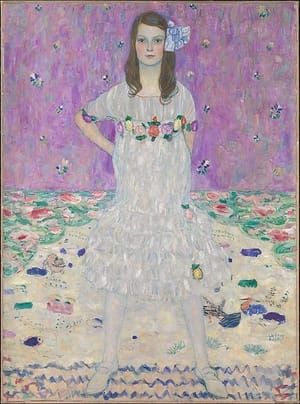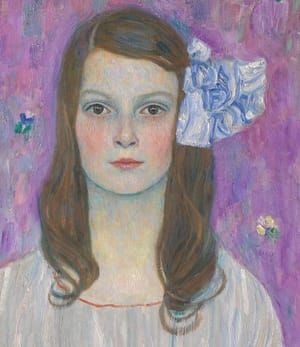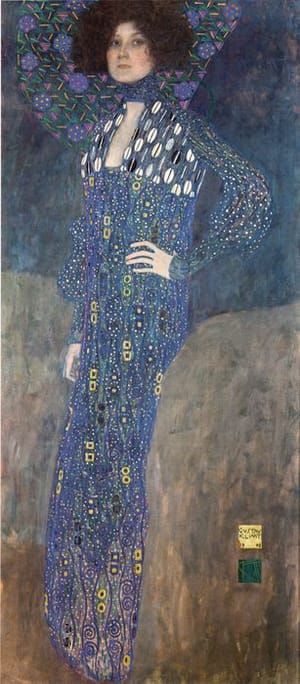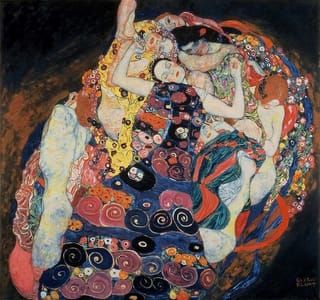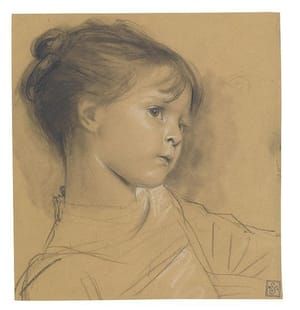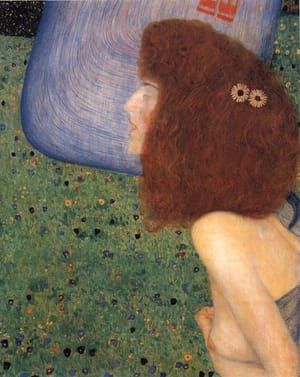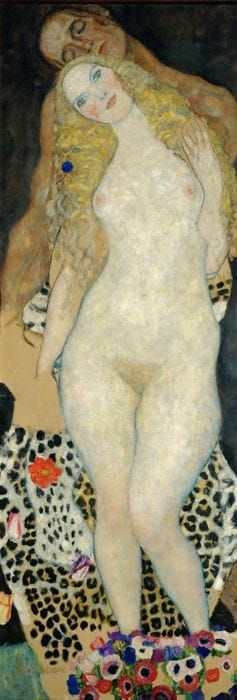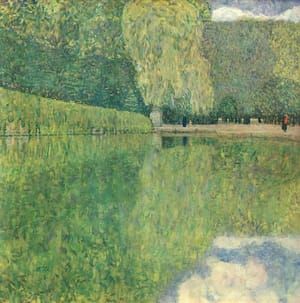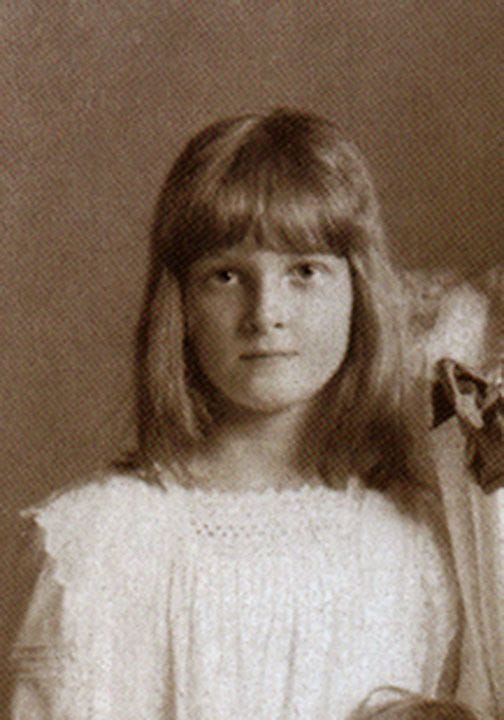

Mäda Primavesi, 1912
Gustav Klimt
Added view shows photograph of Mäda Primavesi.
Mäda Primavesi’s expression and posture convey a remarkable degree of confidence for a 9-year-old girl, even one who was, by her own account, willful and a tomboy. Klimt made numerous preliminary sketches for this portrait, experimenting with different poses, outfits, and backgrounds before deciding to show Mäda standing tall in a specially-made dress amid a profusion of springlike patterns. The picture testifies to the sophisticated taste of her parents, banker and industrialist Otto Primavesi and his wife Eugenia, who were ardent supporters of progressive Viennese art and design. In fact, Klimt soon painted Eugenia’s portrait (Toyota Municipal Museum of Art, Japan).
[https://www.metmuseum.org/art/collection/search/436819]
We see a girl on the verge of womanhood, her body elongated to proportions that could fit either an exceptionally tall girl or a grown woman reasonably well. If not for the narrowness of her shoulders it would be a perfect fit with her future self. She stands now like a bulb in a garden, against a garden wall.
Here Klimt’s decorative treatment of the background finds its fullest match with his subject matter. His pseudo-Byzantine flattening of the plane behind the figures sometimes seems like mere mannerism, like empty decoration. But here it embodies what is happening to the title character. It is blossoming, and she is blossoming. His later sketch after the painting makes this visual-symbolic gesture even more clear: here the idea of Mada stretched vertically beyond the literal truth and rapid stalks of black vertical lines emphasize this moment in every young girl's life.
What is most remarkable for me is the expression. The arm posed determinedly against the hip, the dead on expression of neither offering a smile nor soliciting one. She’s determined. She’s more of herself than most of Klimt’s more famous images of women. I often hear this depiction of Mada being referred to as Klimt’s next embodiment of the femme fatal. This can’t be more off-course. Femme fatal are his earlier images of Judith, or the detail of Hygeia from his Medicine wall work. These are poses that work on us in the way advertising works on us--they make a nominal elicitation of the subject’s personal strength but with their stereotyped poses, their glitzy, meaningless decorative backgrounds (the background of Judith I and II was pure mannerism--it was something he imposed and rehashed in many of his pictures from this period) they seem to be more about the sexual fantasies of the viewer than the viewed (Klimt was an avid Freudist)....
Mada is complex. And it’s interesting that Klimt’s most complex images of women happen when he is furthest from his own sexual fantasies or the demands of a portrait-consuming elite (Mada herself did not commission this image, so she couldn’t sway Klimt‘s artistic vision the way his usual patron could).viewed (Klimt was an avid Freudist)....
Mada, however, does look at us. But she wants nothing from us--Unlike Adele-Bloch Bauer she is not posing for us. She is posing, but the pose seems to be part of her attitude, of her life at that moment. One gets the sense that she could be caught making a similar expression even if she were entirely alone.
Klimt took the commission to paint the portrait of a girl, and transformed his task into painting a portrait of all girls. That simultaneous tightening and widening of the scope--tightening on the peculiar emotional situation of the subject and widening by its truth in depiction to all our individual experiences it can apply to--is the lone common mark of all great art.
[http://unmodernpainting.blogspot.nl/]
59 x 44 in
© 1912 Gustav Klimt
Gustav Klimt
artistArthur
coming soon
